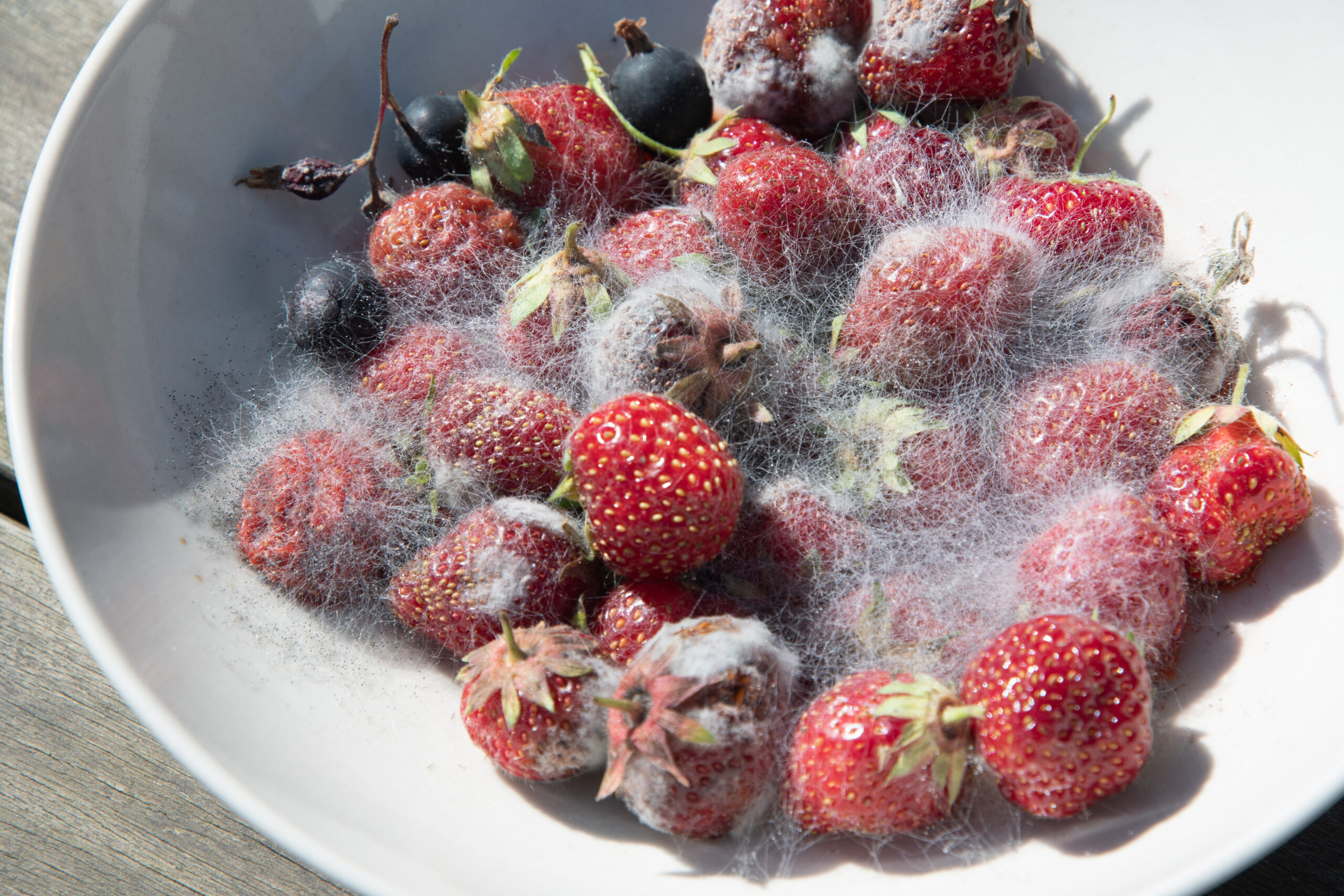This page may contain affiliate links.
Read our disclosure and privacy policy here.
As you know, all food eventually rots. While you might think that’s a bit gross, it is one of the most important processes in nature. Rotting, called decomposition by scientists, is the way important nutrients are recycled from waste and dead matter, and go back into the environment so other organisms can use them.
The organisms which carry out this decomposition process are called decomposers. They play a crucial role in our environment, particularly in the soil food web, which in turn has a huge impact on the health of an ecosystem. Let’s dive into the fascinating world of decomposers and learn more about the different types of decomposers, and their importance on our planet.
Table of Contents
What Are Decomposers?
What are Decomposers?
Decomposers are organisms that break down dead organic matter into simpler substances, like nutrients and minerals. They play a very important role in the ecosystem by recycling these nutrients back into the soil, making them available for other organisms to use. This help new plants grow strong and healthy! Similar to herbivores and carnivores, decomposers are heterotrophic, which means that they get their energy, carbon, and nutrients for growth by consuming organic substances like plants and other animals. This is unlike plants and algae, which get their energy from light, water, carbon dioxide, and other chemicals. Plants and algae are autotrophic.

Did You Know?
Did You Know?
Download Printables
Scavengers & Detritivores vs. Decomposers
While not technically decomposers themselves, many other animals can help accelerate the decomposition process. This includes scavengers like hyenas, vultures and beetles, which feed on animal carcasses; and detritivores, like woodlice and earthworms, which feed on detritus like decomposing plant and animal parts as well as feces (poo!). Think of scavengers like garbage collectors, taking out the big bags of trash, then detritivores are the meticulous janitors who pick up what was missed. Together they ensure all the mess and leftovers get to the recycling plant, where the trash is turned into useful resources. While only fungi and bacteria do the decomposition itself, they have help from these other animals who make a big contribution to the decomposition process.

You might be wondering who these decomposers are. Well, they come in different forms! Some examples of decomposers are fungi (like mushrooms), bacteria, and protozoa. Other animals, like vultures, earthworms, and isopods also feed on dead matter, but they are not considered true decomposers. The big difference is that vultures and earthworms need to eat the dead matter first and digest it. True decomposers can directly turn dead matter into nutrients and absorb them by secreting special substances called enzymes. Decomposers are mostly specialized. This means that each species can break down certain kinds of organic matter, some focusing on wood, others on dead leaves, others on animal matter. Together, like a big team, they recycle what would otherwise be simply wasted and provide the nutrients to allow new plants to grow.
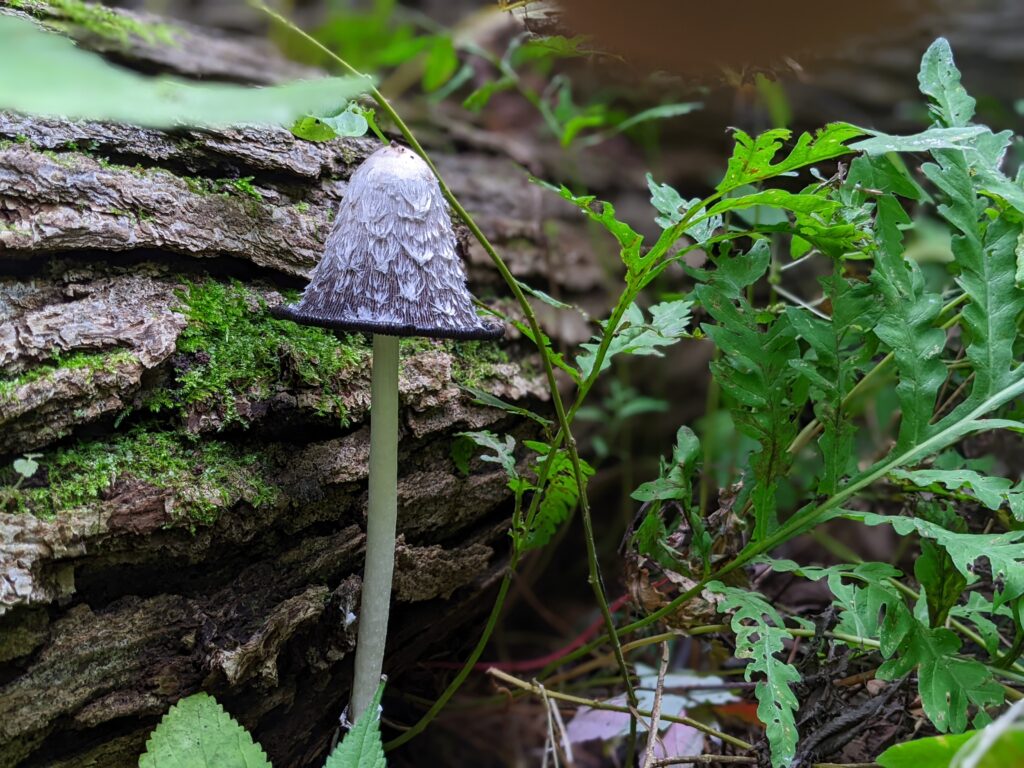
An Inky Cap mushroom we found during one of our nature walks. A mushroom is the fruiting body of a much larger network of mycelium hidden from view.
Decomposers work together as a team to break down the old stuff and recycle those nutrients back into the soil. It’s like they’re nature’s recycling crew! So, next time you spot some mushrooms in the forest growing on a dead tree, remember that they’re doing an amazing job of keeping the Earth clean and helping plants grow!
Types of Decomposers
Decomposers come in many sizes and have various functions. Each does essentially the same thing (recycling material, from dead leaves to animal carcasses), but in a different way, using different enzymes, and at different speeds. Depending on how they do it, ecologists categorize them into two main categories: Fungi, and Bacteria.
Fungi
Fungi, including mushrooms and molds, are vital decomposers in various ecosystems, particularly forests and terrestrial environments. They secrete enzymes that break down complex organic matter, like dead plants and animals, into simpler compounds. These simpler compounds, like nutrients and minerals, can be re-absorbed by the roots of live plants. Fungi play a critical role in decomposition by re-absorbing essential nutrients from the decomposed material. They release those nutrients that are stuck in the dead organic matter back into the ecosystem. Decomposers come in a range of forms, from single-celled organisms to complex multicellular organisms.
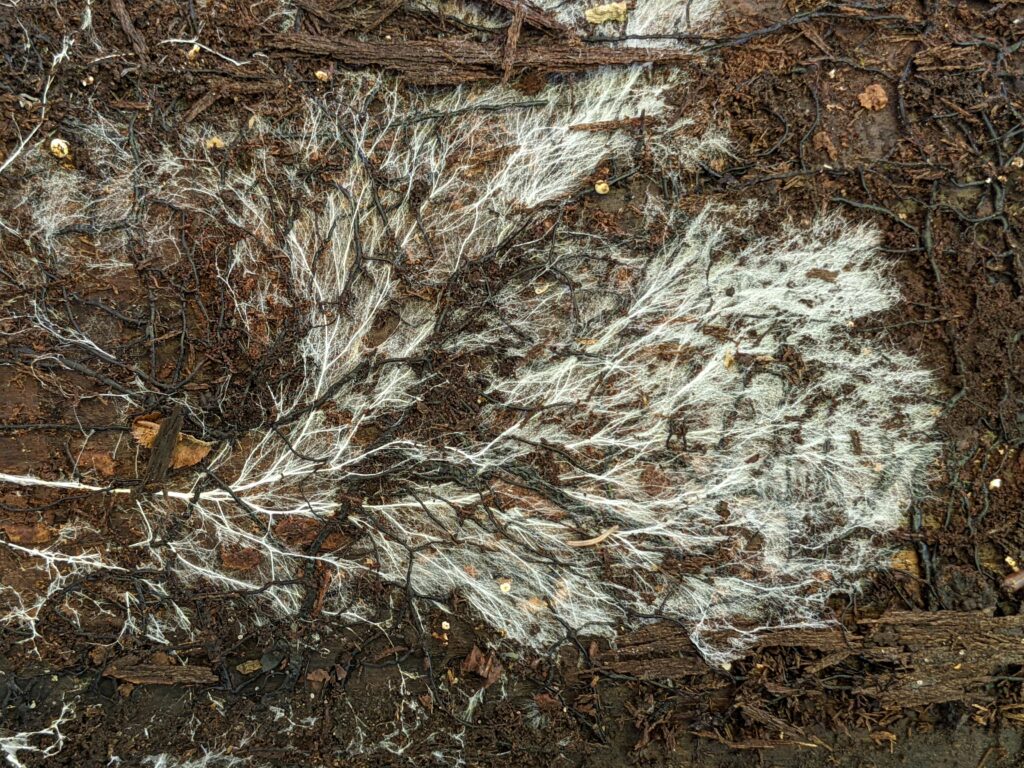
Here is a mycelium network we found under the bark of a log. Mycelium is what is responsible for the decomposition of dead matter. Mushrooms are simply the fruit of the mycelium network.
Bacteria
Bacteria are microscopic organisms which play an equally important role in the decomposition processes. They contribute to decomposition in a different way than fungi, because they have an appetite for different things. But like fungi, bacteria decompose matter by secreting enzymes that facilitate the breakdown of complex compounds into simpler forms. Being single-celled organisms, bacteria are incredibly versatile and can thrive in almost every environment. This ensures that decomposition can take place in any ecosystem, no matter how remote.
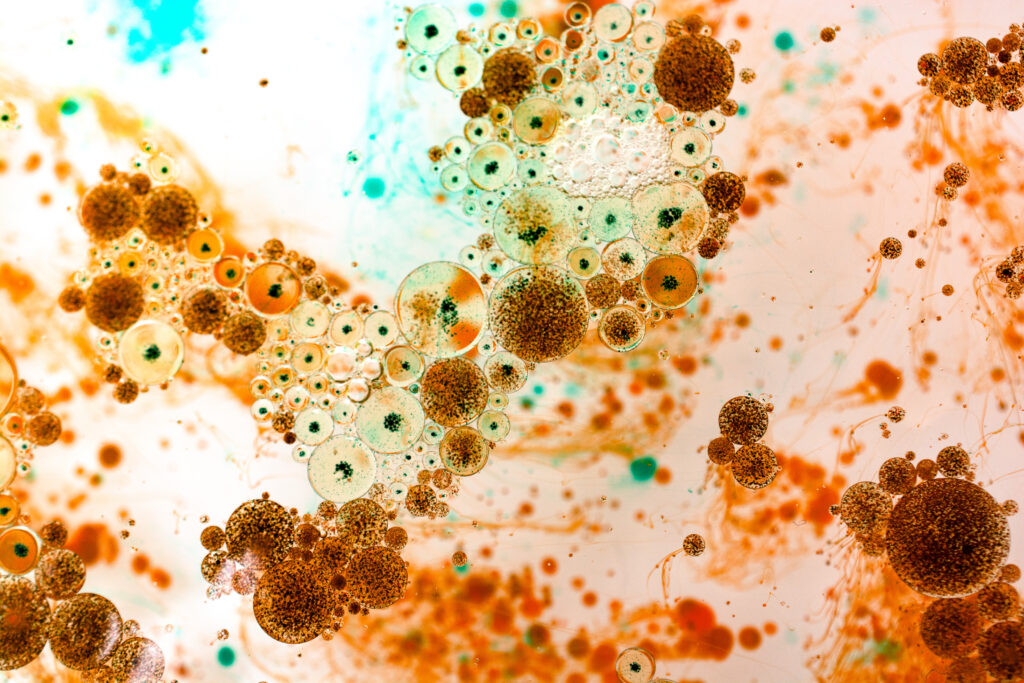
A microscopic closeup of bacteria and microbes.
The Soil Food Web
When we think about food webs, we often visualize only the visible parts like plants, herbivores, and carnivores. But beneath our feet, there is a hidden world that sustains life on Earth. The soil is not just ordinary dirt; it’s a vibrant and intricate ecosystem that supports the entire web of life. It’s home to a multitude of creatures and their fascinating relationships.
In this bustling underground community, worms play the role of nature’s gardeners. They tirelessly aerate the soil, creating pathways for water and air to reach the roots of plants. Meanwhile, insects like ants and small mammals such as voles live their lives away from the prying eyes of predators.
Within all the hustle and bustle, we find the decomposers, the heroes of the soil ecosystem. Through their tireless efforts, they release vital nutrients back into the soil, sustaining the cycle of life. Remember: the soil is not just dirt for plants to grow in; it is a living, moving and thriving community. Think about that for a moment when you’re outside walking on a forest trail, or running through the park. There is a wonderous world hidden right beneath your feet—the worms, insects, small mammals, and the amazing decomposers—all working together to support the delicate balance of life on Earth.
The Energy Pyramid
The energy pyramid is a helpful tool to understand how energy flows through an ecosystem. It starts with the producers, like plants and algae, which make their own food through photosynthesis. Moving up the pyramid, we find the primary consumers that eat the producers, followed by secondary consumers that feed on the primary consumers, and so on. At the very top of the pyramid, we find the apex predators. These are the animals at the top of the food chain. They may have resource competitors, but they are not directly preyed upon by any other animal.
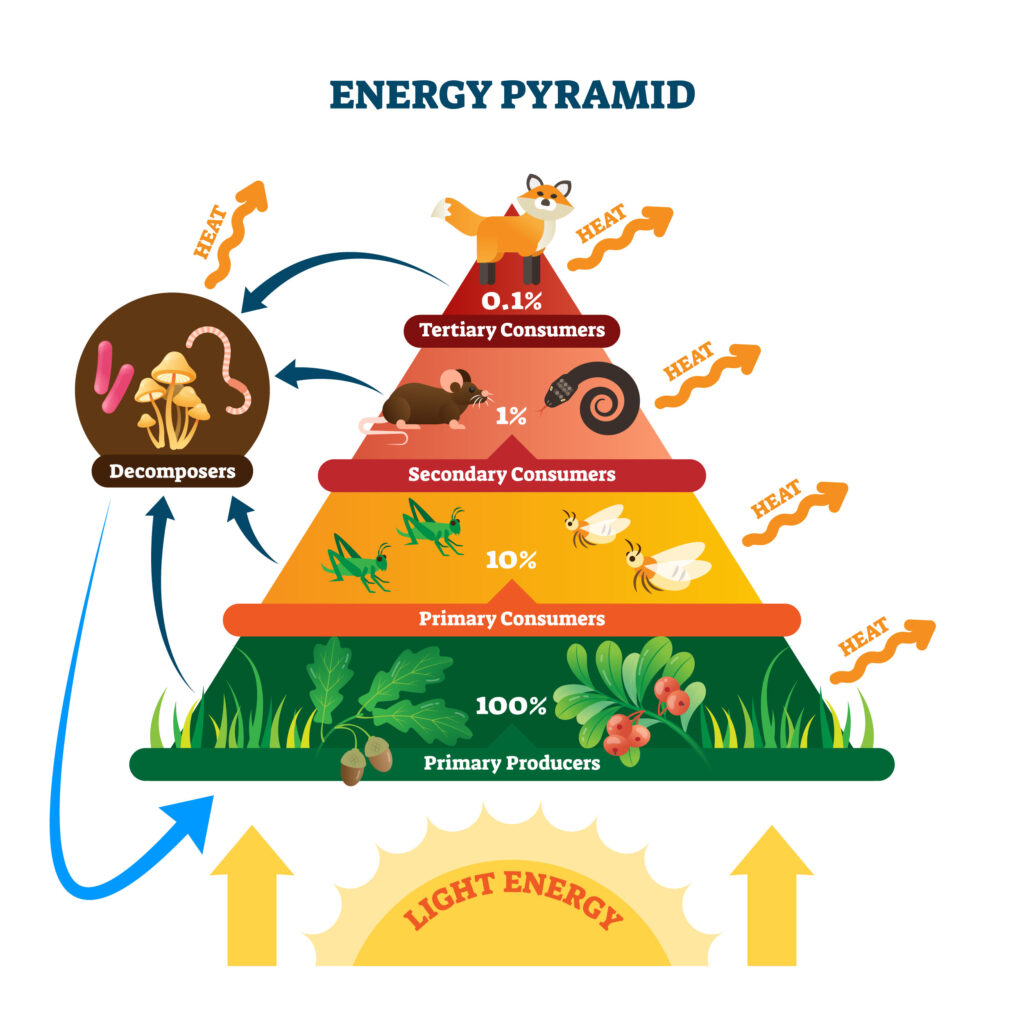
While the energy pyramid usually focuses on the producer and consumer levels, it’s important to recognize the vital role of decomposers. When organisms die at any level, decomposers step in and break down their remains, converting the complex organic matter into simpler forms and releasing energy in the process. This energy becomes available for other organisms in the ecosystem to use. Because the nutrients they recycle are used by plants, they are sometimes considered the bottom of the pyramid, but it’s a bit more challenging to fit them into this model because all organisms, regardless of their level in the pyramid, eventually die and get decomposed. So decomposers are just as important as any other member of the energy pyramid, playing a vital role in sustaining life and maintaining the health of the ecosystem.
Terrestrial vs. Aquatic Decomposers
While decomposers are present in both terrestrial and aquatic ecosystems, there are some differences. In forests and other land habitats, decomposers like fungi steal the show. You can find these fungi in places like the forest floor or compost piles, working hard to recycle nutrients and make the soil better for plants to grow.
Underwater, it’s a different story, as the main decomposers in aquatic ecosystems are usually tiny bacteria. These amazing bacteria can do similar things to what fungi do on land, breaking down stuff like dead algae, plants, and even animal leftovers. This helps keep the water clean and supports all the different creatures that live there.

Did You Know?
Did You Know?
Download Printables
What Happened Before Decomposers?
Before fungi evolved lignin-degrading enzymes, the decomposition of wood was slower and often incomplete, leaving huge amounts of lignin in the soil. This accumulation, through geological processes, gave rise to many coal deposits.

Why do decomposer fungi thrive on land and bacteria in water? Fungi have an advantage on land, especially in forests, because they have long, branching threads called hyphae, which allow them to go inside of plant and animal cells and break them down from the inside, and they are the only organisms that have the enzyme needed to break down lignin, a hard substance found in wood. In the soil, fungi can also make complex networks called mycelia, allowing them to share resources and ensure they spread far and wide.
Bacteria, on the other hand, can only interact with the exposed surfaces of organic matter, which is tough on land but much easier underwater. Moreover, they are single celled organisms, so mycelia outcompete them on land, but fungi are not able to form these networks underwater, so they lose this advantage. Overall, aquatic decomposing bacteria are simply better adapted for the job.
What Would Happen if There Were No Decomposers?
Sometimes it’s hard to understand just how important decomposers are, so let’s try to imagine something together. Imagine if you never cleaned your room and neither did your parents or anyone else, ever. After a day, it might still be okay. After a week, it would start to get messy. And after a month, it would become difficult to find anything, and the smell would be quite unpleasant. As time goes on, the situation would only get worse.
Now, think about this on a much larger scale. The same thing would happen everywhere in the world, from forests and meadows to coral reefs, if decomposers did not exist. Dead organic matter would pile up everywhere with no one to get rid of it and no nutrients to support new life. Leaves, fallen trees, and animal bodies just lying around, spreading disease and not allowing new plant life to grow.
All this dead matter lying around would create a huge problem. As you now know, when organic matter decays, it releases vital nutrients back into the soil. Without decomposers , those nutrients would remain trapped, unable to feed new plants. And if new plants don’t grow, what would herbivores eat? And if the herbivores don’t survive, what would other animals hunt for food? It’s a ripple effect that disrupts the delicate balance of the ecosystem.
This is what makes decomposers so important in nature. Earthworms wiggling in the soil, vultures soaring overhead, and mushrooms sprouting on the forest floor—all of them are part of this incredible team. They work tirelessly to break down and recycle dead matter, ensuring that the cycle of life continues, and our planet remains clean and vibrant.
Summary
Decomposers are the unsung (often overlooked or ignored) heroes of the natural world, working in the dark so our forests, grasslands and oceans stay healthy. Their ability to break down organic matter sustains the soil food web, nourishes the ecosystem, and ensures no nutrients are lost. Understanding the significance of decomposers helps us appreciate their vital role in maintaining a healthy and balanced environment. So next time you see mushrooms growing on a fallen tree, take a moment to appreciate just how important they are to our existence.
Here’s a quick summary of some of the important things we learned in this article.
- When food rots, it’s called decomposition. Dead plants and dead animals also decompose.
- Decomposition is possible because of fungi and bacteria. They are called decomposers.
- Other animals scavengers and detritivores help in the decomposition process by consuming dead matter and helping to break it down into smaller components. Vultures are an example of a scavenger, and isopods and millipedes are an example of detritivores.
- The byproduct (poo!) of scavengers and detritivores still need to be broken down by fungi and bacteria in order to make the nutrients locked within that matter available to plants. This is why scavengers and detritivores are not considered true decomposers.
- Only fungi and bacteria are considered true decomposers since they do not need to consume dead matter to break it down. They break it down with the help of enzymes that they secrete.
- Fungi are the most effective decomposers on land, while bacteria are the most effective decomposers in aquatic ecosystems.

DISCUSSION
DISCUSSION
DISCUSSION
FOLLOW-UP TOPICS
Science Topics
Decomposers, Scavengers, Detritivores
Heterotrophic vs. Autotrophic
Energy Pyramid

There’s a lot to explore right where we are, in our own neighborhoods and backyards! Join us while we get off the couch and explore the everyday wonders of nature, science, space, engineering, art, and anything else we stumble upon during on our adventures.


